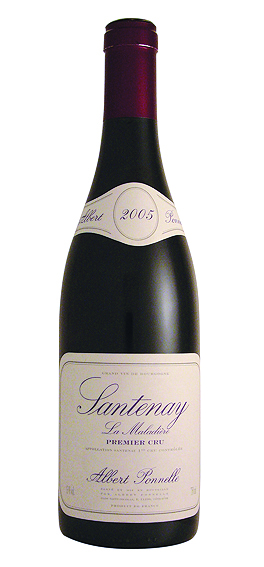France > Burgundy > Albert Ponnelle
Organic, Biodynamic
Pierre-Lazare Ponnelle founded his winery and vineyards in 1870. He developed his business successfully while conducting a number of research projects looking at wine-making processes and understanding fermentation. This led him to collaborate with Louis Pasteur, who at the time lived in Dôle, near Beaune, the wine capital of Burgundy. Today, his great-great-grandson Louis manages the Maison... the fifth generation to work the vineyards and cellars. Ponnelle owns vineyards in various Cote de Beaune appellations, and vinifies wine from purchased fruit from several Cote de Nuits vineyards as well.
Vineyard work is done the same way it was done before mechanization and chemical treatments started being used. Hardly any fertilizers are used in the vineyards apart from a little manure. No weed killers are used in order to promote biodiversity; existing plants provide sufficient organic material. The vineyards are plowed using horses, the use of heavy machinery is avoided not to compact the soil.
Pierre with pere Louis
Organic and biodynamic practices are used in all the vineyards, no synthetic molecules or products are used at all to treat the vineyards. A healthy vineyard is naturally disease resistant, and to maintain vine health only natural tisanes made from valerian, garlic, nettle, clay and other plants are used. Sulfur and copper are avoided as much as possible; and in accordance with biodynamic principles, interventions in the vineyard are regulated by the lunar calendar. The aim is to promote biodiversity, preserve the plants and the soil in order to obtain healthy and balanced fruits while preserving nature.
Harvest usually takes place around the 15th of September, and harvest is done in the cooler hours of the morning and by hand. The fruits hand-harvested and then triaged before entering the cellar, unsatisfactory fruits are discarded.
The reds are destemmed on arrival at the cellar and left to rest on the skins, preferably in wood, for a week or more, depending on the vintage. This phase allows tannin and color extraction from the skin. When the vats have reached a temperature of 18 degrees Centigrade, the yeasts come alive and the alcoholic fermentation begins. Fermentation will take 8 to 15 days, with regular punch down to break the crust formed at the top and mix it with the liquid again. The use of sulfite is kept to the minimum and varies depending on the health of the grapes. The red wines are bottled using gravity, no fining or filtration, whites are generally lightly fined before bottling.
The Wines
Blancs
Rully Les Saint Jacques
Saint Romain
Santenay Les Carmelites
Rouges
Bourgogne Rouge
Saint Romain
Beaune 1er Cru Clos du Roi
Savigny-les-Beaune Vieilles Vignes
Savigny-les-Beaune 1er Cru Les Peuillets
Nuits Saint Georges Vieilles Vignes
Gevrey Chambertin Les Cabottes
Fixin




